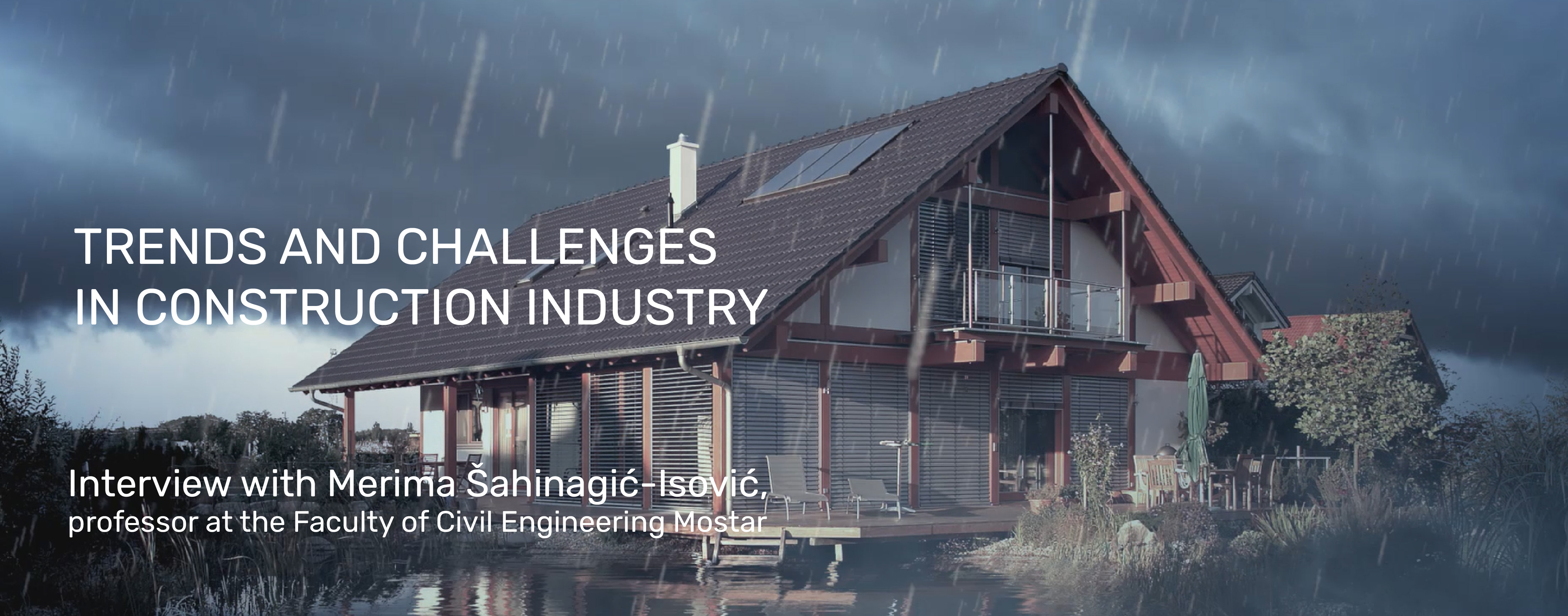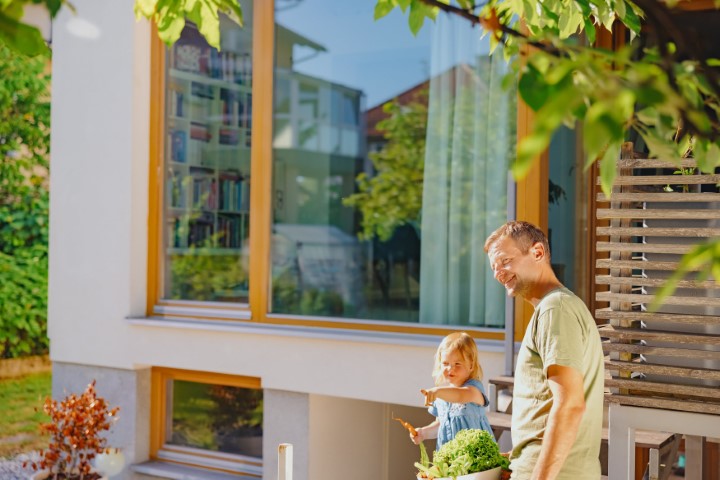
Interview with Merima Šahinagić-Isović, full professor at the Faculty of Civil Engineering, University "Džemal Bijedić", Mostar, Bosnia and Herzegovina.
3/3 - Part three.
7. What building hardware manufacturers should pay more attention to
In the future, building hardware manufacturers should also pay attention to the aspect of LCA analysis of each product or group of products individually. For LCA analysis, it is necessary to thoroughly analyse and well describe all processes related to the product being analysed. Possible analysis goals are as follows:
- identifying weak points in production or process optimization
- optimization of materials through the analysis of the fulfilment of conditions in the application
- optimization of the production of elements or comparison of individual elements
- optimization of product elements in terms of product life
- optimization of the product in its service life
- accompanying grades in the development of new materials
- assistance in decision-making when trading
Before starting the LCA analysis of a construction product, it is necessary to determine the limits as far as the analysis can go. It is very important to define the criteria for the limits of the analysis at the level of international standards so that the data on the impact of individual products are comparable. The goal of the LCA analysis is to achieve maximum benefit for the investor, but also for the user of the product and the society as a whole.
8. What people should pay attention to when building
When building a new house, it is important to take into account all important factors, already in the conceptual design phase and in cooperation with the designer, in order to build a high-quality, optimal, and energy-efficient house:
- analyse the location, orientation, and shape of the house;
- apply a high level of thermal insulation of the entire outer envelope;
- take advantage of the sun and protect it from excessive sun exposure;
- use an energy-efficient heating, cooling, and ventilation system, and combine it with renewable energy sources.
The decision on the construction of an apartment or house will certainly be influenced by the price per m2 and the location of the building. A well-insulated house consumes less energy for heating in winter as well as for cooling in summer. The loss of heat and energy consumption per m2 will affect not only the monthly expenditure on electricity, but also the quality and comfort of housing, as well as the building's longevity. The two basic parameters to pay attention to are:
- thermal insulation of the outer wall
- energy efficiency at the openings
The thermal insulation of the outer wall can be placed on the outside or on the inside of the wall. The rule is that in new buildings, thermal insulation should be performed on the outside. Thermal insulation on the inside of the wall is unfavourable from a construction and physical point of view and is often more expensive due to the need to additionally solve the problem of water vapour diffusion, stricter requirements in terms of fire safety, loss of useful space, etc. Thermal insulation on the inside of the wall is physically worse because although we achieve an improvement in the insulation value of the wall, we significantly change the heat flow in the wall, which makes the basic load-bearing wall colder. For this reason, special attention should be paid to the vapour barrier in order to avoid the formation of condensate and the appearance of mould. In addition, it is necessary to thermally insulate the part of the partitions that join the outer wall.
Windows are an element of the outer envelope of a building through which the greatest heat losses occur. Total thermal losses through windows represent more than 50% of the building's thermal losses. Losses through windows are usually ten or more times higher than those through walls, which is why it is clear how important the energy efficiency of windows is in the total energy needs of buildings.
In windows as well as in the entire outer envelope of the building, the heat transfer coefficient U(k) expressed in W/m2K plays an important role. Glass and window profiles participate in the total thermal losses of windows. Window profiles, regardless of the type of material they are made of, must ensure: good sealing, breaking the heat bridge in the profile, and easy opening as well as low heat transfer coefficient.
9. Recommendations for increasing energy efficiency
The whole world is facing two major energy problems today. The first one is the lack of energy and insecurity in its supply, and the second one is the environmental pollution and climate change caused by excessive and irrational energy consumption.
Energy efficiency is the sum of planned and implemented measures aimed at using the minimum possible amount of energy so that the level of comfort and production rate remains preserved. Every person can contribute to the global increase of energy efficiency, by changing habits in everyday life and work for example.
- Simple measures to increase energy efficiency, at no additional cost, with immediate savings:
- turn off the heating or cooling at night and when no one is staying in the house;
- avoid covering the heating bodies with curtains, coverings, etc.;
- time-optimize heating and hot water preparation;
- in the heating season, reduce the room temperature by 1°C;
- in the cooling season, set the cooling to min. 26°C;
- use natural lighting as much as possible;
- switch off the lighting in the room when it is not necessary;
- turn on washing machines and dishwashers only when they are full, and preferably at night.
Measures to increase energy efficiency at low cost and quick return on investment (up to 3 years):
- seal windows and external doors;
- check and possibly repair the hardware on windows and doors;
- isolate niches for radiators and roller shutter boxes;
- thermally insulate the existing sloping roof or ceiling situated towards the unheated attic;
- reduce heat losses through windows by installing blinds, curtains, etc.;
- install thermostatic valves on radiators;
- regularly service and adjust the heating and cooling system;
- install automatic control and supervision of energy at home;
- install energy-saving bulbs in lighting fixtures;
- replace existing appliances with more energy-efficient ones - A-class energy appliances.
Measures to increase energy efficiency at slightly higher costs and a longer period of return on investment (more than 3 years). The following measures are best carried out at the same time as the necessary reconstruction measures:
- replace windows and exterior doors with better thermal quality windows (recommended window U(k) 1.1-1.8 W/m2K);
- thermally insulate the entire exterior envelope of the house: walls, floors, roof, and surfaces situated towards unheated areas;
- build a windscreen at the entrance to the house;
- repair and restore the chimney;
- isolate the hot water pipes and the tank;
- analyse the heating and cooling system in the house; if necessary, replace it with a more energy-efficient system, and combine it with renewable energy sources.



 EN
EN  SL
SL  HR
HR  IT
IT  SR
SR  BG
BG  BS
BS  RO
RO  DE
DE 